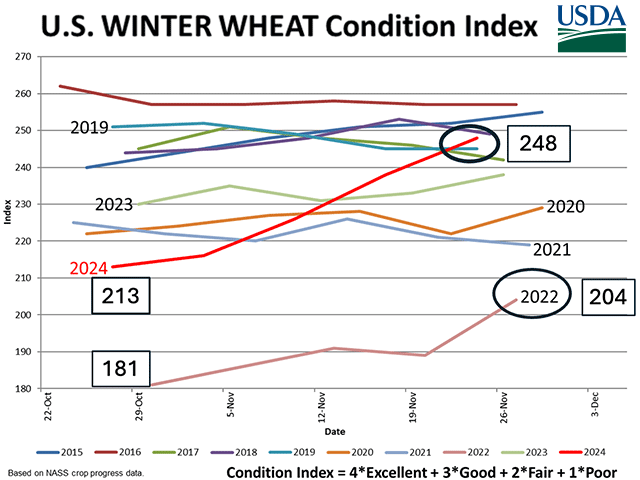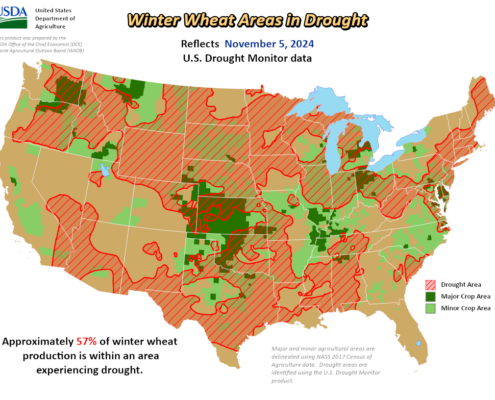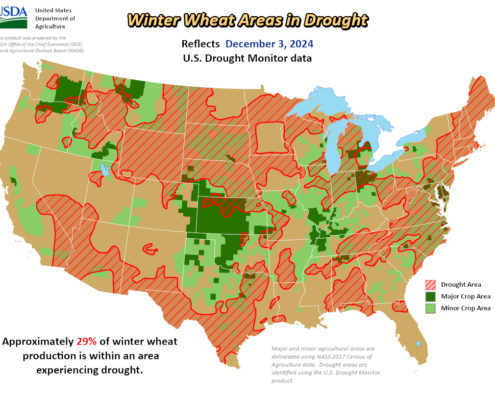Wheat farm families across the United States are sharpening their pencils to figure out how to deal with the on-going challenges of high input costs and low crop prices. Fortunately, 2025 winter wheat crop conditions do not create another concern for many of them following a remarkable turnaround in November.
Writing in Progressive Farmer Dec. 3, meteorologist Bryce Anderson said a boost of rain and snow in November “has given the crop a buffer and then some in anticipation of the post-dormancy development and production phases when spring 2025 rolls around.”
Record Improvement
Anderson shared USDA’s winter wheat “condition index” that suggest a record 35-point improvement from late October to late November (see chart below). Similarly, Kansas wheat rated good to excellent increased by 15 percentage points between Nov. 3 and Nov. 24. That is the largest increase since at least 1987 said Douglas Bounds, Kansas state crop statistician, in the Progressive Farmer article.

Hard red winter (HRW) and hard white (HW) seeded areas in Texas, Oklahoma, Kansas, Colorado, and southwestern Nebraska saw rainfall that far exceeded average levels for November. The same cannot be said for winter wheat in the rest of Nebraska, Wyoming, and South Dakota. Soft red winter wheat conditions in southern Illinois, Indiana, Kentucky, and Ohio that supply the center Gulf export tributary remain good. And snow and rain in November helped improve winter soft white conditions in the Pacific Northwest. Overall, the month saw a reduction from 57% to 29% of winter wheat production in an area experiencing drought (below).


Click here to see more...